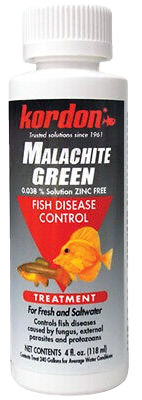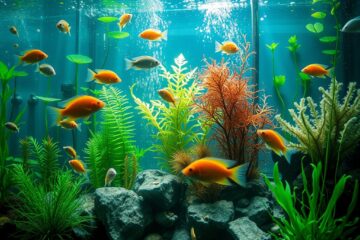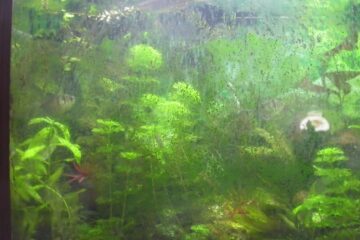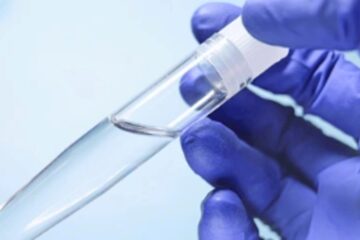Ich, short for Ichthyophthirius multifiliis, is a common and highly contagious parasitic infection that affects aquarium fish. It is also known as white spot disease due to the distinctive white cysts or lesions that appear on the fish’s skin, fins, and gills. These spots are the mature cysts of the parasite, which can be visible to the naked eye.
Symptoms of Ich
- White spots on the body, fins, and gills (resembling grains of salt or sugar).
- Fish may rub or scratch against objects in the tank as they try to relieve the irritation.
- Fish may show signs of clamped fins, lethargy, or loss of appetite.
- Gills may appear red or inflamed.
- In severe cases, fish may develop rapid breathing or exhibit difficulty breathing due to the gill damage.
Life Cycle of Ich
The parasite’s life cycle includes both free-swimming and attached stages:
- Trophont (feeding stage): The parasite attaches to the fish’s skin or gills and feeds on tissue.
- Tomont (cyst stage): After feeding, the parasite leaves the fish and forms cysts that drop off into the water, where they mature.
- Free-swimming theront stage: After the cysts mature, the free-swimming parasites search for a new fish host to infect.
Treating Ich In Your Aquarium
ADWAQUATICS NOTE
In the eyes of this fish-keeper, its always best to try more natural methods before resorting to chemicals, I would try using the aquarium salt method before resorting to the chemical method.
Steps to Treat Ick with Aquarium Salt
- Quarantine: If possible, move infected fish to a quarantine tank to prevent the spread of the parasite.
- Dissolve Salt: Use aquarium salt (not table salt) and dissolve it in a small amount of water. Aim for about 1 tablespoon of salt per 5 gallons of water.
- Add Salt Gradually: Slowly add the salt solution to the aquarium over several hours to prevent shocking the fish.
- Maintain Temperature: Increase the water temperature slightly (to around 78-80°F, depending on the species) to speed up the life cycle of the parasite, making it more susceptible to treatment.
- Increase Aeration: Ensure good aeration, as salt can reduce oxygen levels in the water.
- Monitor and Repeat: Check for signs of improvement, and if necessary, you can add more salt, but do not exceed 3 teaspoons per gallon.
- Treatment Duration: Continue treatment for at least 5-7 days, and monitor fish for signs of stress or improvement.
- Water Changes: After the treatment, perform a partial water change to help remove excess salt and restore water quality.
Additional Tips
- Compatibility: Make sure your fish can tolerate salt, as some species are sensitive to it.
- Avoid Medications: While using salt, avoid other medications unless specified, as some can react negatively with salt.
- Observe: Keep a close eye on your fish for any signs of stress or adverse reactions.
If the situation doesn’t improve, consider consulting with a fish health professional for alternative treatments.
IMPORTANT NOTE
Don’t forget that if you quarantined the fish, there is still a chance the infection is still in the original tank, continue to monitor the ‘host’ tank for signs of the parasite while treating the infected fish.
Steps to Treat Ich with Chemicals
- Copper-Based Medications:
- How It Works: Copper disrupts the parasite’s life cycle.
- Usage: Follow the manufacturer’s instructions carefully. Maintain a specific copper concentration, usually between 0.2 to 0.5 mg/L.
- Caution: Monitor copper levels with a test kit, as excessive copper can be harmful to fish and invertebrates.
- Formaldehyde:
- How It Works: Formaldehyde kills the free-swimming stage of the parasite.
- Usage: Use as directed, typically at a concentration of 25-50 mg/L. It’s often found in combination treatments.
- Caution: Highly effective but can be toxic, so monitor fish closely.
- Malachite Green:
- How It Works: This dye disrupts the parasite’s cellular functions.
- Usage: Usually used in combination with formaldehyde for enhanced effectiveness. Follow dosing instructions carefully.
- Caution: Malachite green can be toxic to some fish and is not safe for use with invertebrates.
- Praziquantel:
- How It Works: Primarily used for external parasites but can help with secondary infections associated with ick.
- Usage: Follow the manufacturer’s dosing guidelines.
- Caution: Generally safe for most fish but still requires monitoring.





General Guidelines
- Quarantine: Always treat infected fish in a separate quarantine tank to avoid spreading the parasite.
- Temperature Increase: Raise the tank temperature slightly to accelerate the life cycle of the parasite, making it more susceptible to treatments.
- Aeration: Ensure good aeration, as some treatments can reduce oxygen levels.
- Follow Instructions: Carefully adhere to the dosing and timing recommendations for any chemical treatment.
- Monitor Fish: Observe your fish for any adverse reactions and signs of stress.
After Treatment
- Water Changes: Perform partial water changes to help remove any residual chemicals after treatment.
- Test Water Parameters: Monitor water quality to ensure a healthy environment post-treatment.
If symptoms persist after treatment, consider consulting with a fish health professional for further advice.



